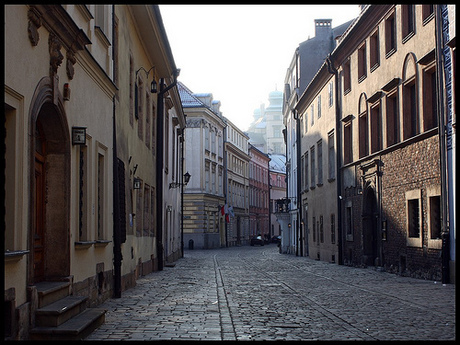Kanonicza Street
Ulica Kanonicza (or Kanonicza Street) is probably the most beautiful street in Krakow, and certainly one of the oldest. The picturesque Kanonicza Street ends near the foot of the Wawel Hill and constitutes the last part of the so-called Royal Road, leading from Krakow's main gate near the Barbican, through the Main Square, and ending at the Wawel Castle itself.
The chronicles first mention Kanonicza Street as 'the little street that leads from the Wawel castle to Krakow' around 1338. In the second half of the 14th century it became the living place of the Krakow canons, and this custom lead to calling it the Kanonicza Street (which means “street of the canons”). Even now, some of the buildings still belong to the church and the Krakow Archdiocese.
Halfway through the street, on the left side (if facing the Wawel Castle) used to stand the St. Mary Magdalena's church. Now the church is gone, but what's left is a scenic, little plaza, that offers a view on the great Baroque Saint Peter and Paul's Church and the Romanesque Church of Saint Andrew's, one of Krakow's oldest. The view, however, is a tad spoiled by the unfortunate monument of Piotr Skarga, one of the most important figures of Polish Enlightenment.
Kanonicza Street has witnessed some of the more contemporary figures significant for Krakow (and all Poland). At least two are worth mentioning. Since Kanonicza has always been a place of residents of the clergy, it is not surprising that its most famous Polish member lived there also: 19-21 Kanonicza Street was the longtime address of Karol Wojtyla, the later pope John Paul II. Currently these buildings house the Archdiocesan Museum, gathering the pope's mementos – ranging from his skis, and football shirts he received from teams that visited him, to valuable gifts from his most distinguished guests. Another famous Pole who left his mark on Kanonicza Street was the theatre director Tadeusz Kantor. On 5 Kanonicza Street, in the so-called Cricoteka (deriving from Kantor's “Crico-Theater”) one can see exhibits and photographs from different plays, some of them most curious.



